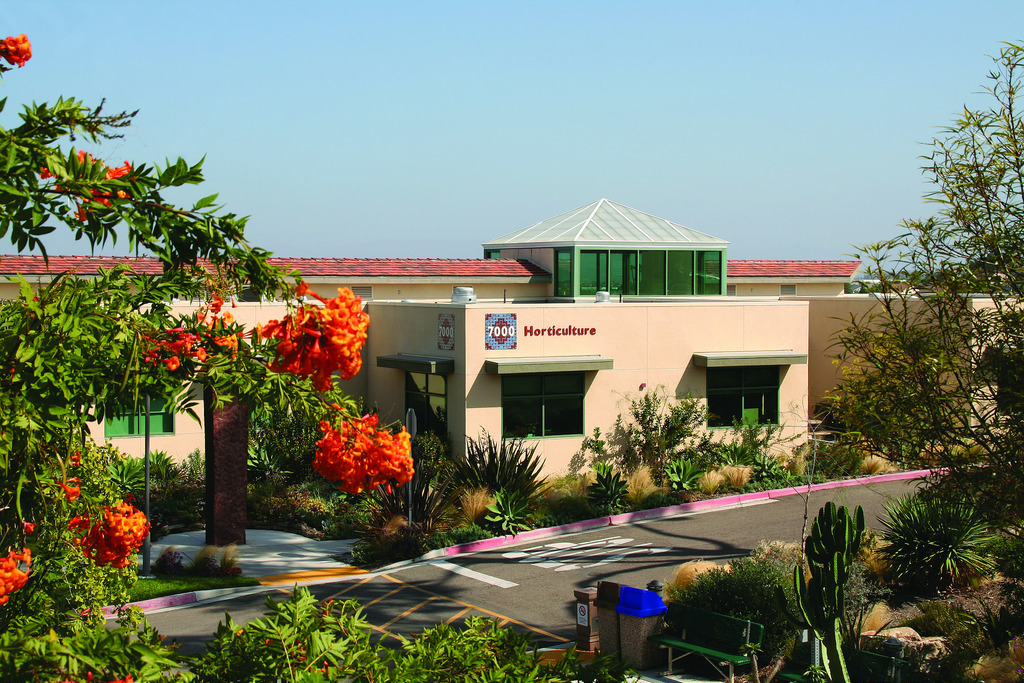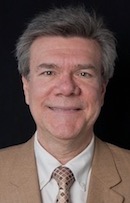Daily Business Report-Aug. 1, 2018
Researchers gather sediment cores from Beaufort Sea during 2013 fieldwork. (Photo: Lloyd Keigwin/WHOI)
Evidence of Ancient Abrupt
Climate Change found in Arctic
By Robert Monroe | Scripps Institution of Oceanography
A team of researchers from Scripps Institution of Oceanography at the University of California San Diego and Woods Hole Oceanographic Institution found evidence for a massive flood of fresh water in the western Arctic, thought to be the cause of an ancient cold snap that began around 13,000 years ago.
The find could put to rest a question that has been open among scientists for more than 100 years. The existence of the cold snap, called the Younger Dryas, had been known for decades but the physical cause for its origin had eluded researchers who traveled to points throughout the Atlantic Ocean, the eastern United States, and Canada looking for it.
In 2013, Neal Driscoll from Scripps, Lloyd Keigwin from Woods Hole and colleagues set sail to the eastern Beaufort Sea in search of evidence for the flood offshore of the Mackenzie River, which forms the border between Canada’s Yukon and Northwest territories. From aboard the U.S. Coast Guard Cutter Healy, the team gathered sediment cores bearing fossils of microscopic organisms known as foraminifera from along the continental slope north of the Mackenzie River.
The researchers found a record of the event encased in seafloor sediment over 200 kilometers (~135 miles) from the mouth of the river. Preserved in the shells of foraminifera were isotopes of oxygen with a ratio that is consistent with a large incursion of glacially derived freshwater.
“The signature of oxygen isotopes recorded in foraminifera shells preserved in the sediment allowed us to fingerprint the source of the glacial lake discharge down the Mackenzie River 13,000 years ago,” said Driscoll, a geologist at Scripps and co-author of the National Science Foundation-funded study. “Radiocarbon dating on the shells provided the age constraints. How exciting when the pieces of a more than 100-year puzzle come together.”
The abrupt climate change triggered by the freshwater inundation ended more than 2,000 years of warming, said Keigwin, an oceanographer at WHOI and lead author of the study, which appears online today in the journal Nature Geoscience.
The Younger Dryas triggered dramatic changes to regional climates. The freshwater from glaciers made its way from the Arctic to the north Atlantic Ocean. There it disrupted a circulation pattern that stretches from Greenland to the Southern Ocean. That pattern, the Atlantic Meridional Overturning Circulation (AMOC), transports warm equatorial waters poleward and releases heat to the atmosphere.
That disruption caused substantial cooling in Europe, The Younger Dryas in fact takes its name from a flower (Dryas octopetala) that flourished in the continent’s cold conditions at the time.
The Younger Dryas lasted a mere 200 years making it only a short blip in a warming period that has lasted 20,000 years but to scientists like Driscoll, it’s an important example of how feedbacks affect the climate system. Overall trends of warming or cooling on Earth are not linear but are punctuated by reversals and accelerations such as this one. Such events help scientists interpret current trends, distinguishing global climate signals from regional signals.
Next steps in future research, Keigwin said, will be for scientists to answer remaining questions about the quantity of fresh water delivered to the North Atlantic preceding the Younger Dryas event and over how long of a period of time.
“Events like this are really important, and we have to understand them better,” added Keigwin. “In the long run, I think the findings from this paper will stimulate more research on how much fresh water is really necessary to cause a change in the system and weakening of the AMOC. It certainly calls further attention to the warming we’re seeing in the Arctic today, and the accelerated melting of Greenland ice.”
Earlier this year, a paper by researchers at the University College London and WHOI found evidence that the AMOC has not been running at peak strength since the mid-1800s and is currently at its weakest point in the past 1,600 years. Continued weakening could disrupt weather patterns from the U.S. and Europe to the African Sahel.
Besides Keigwin and Driscoll, co-authors of the paper include Ning Zhao and Liviu Giosan of WHOI, Shannon Klotsko of Scripps Oceanography, and Brendan Reilly of Oregon State University.
Robert Monroe: Editor – explorations now/Communications Officer – Oceans and Atmosphere research Scripps Institution of Oceanography, UC San Diego
___________________
Scientist panel urges regulators to list
pesticide as a toxic contaminant
Dan Morain | Perry Communications Group
A panel of California scientists urged regulators Monday to list a widely used agricultural pesticide as a toxic air contaminant, a step the Trump administration’s Environmental Protection Agency opted against taking.
Chlorpyrifos, manufactured by Dow Chemical, is used on 60 crops including citrus, almonds, and grapes. Its use has declined from 2 million pounds used a decade ago to 900,000 pounds in 2016.
A scientific review panel of the state Department of Pesticide Regulation concluded the insecticide is a neurotoxin and places children at risk. The recommendation to the state Department of Pesticide Regulation won’t result in an immediate ban. But it likely will result in tighter restrictions on chlorpyrifos’ use, assuming the state takes final action later this year or early in 2019.
Californians for Pesticide Reform told the state: “Action is needed to address unsafe exposures – even before further refinement to the risk analysis is conducted.”
Citrus and cotton growers: “Chlorpyrifos is an important crop protection tool for California producers … The listing of chlorpyrifos as a toxic air contaminant will add restrictions on its use that would very likely eliminate it as a viable product in California.”
The Obama administration moved to regulate the product. But President Donald Trump’s first EPA director, Scott Pruitt, intervened to delay that action.
An alternative: Chlorpyrifos is an old-style pesticide. Newer pesticides, known as neonicotinoids, may be less toxic to humans but have been associated with bee deaths.
___________________

Leasing begins at Sola at Pacific Highlands Ranch
Sola at Pacific Highlands Ranch has begun leasing its community of 252 luxury rental homes located at 13385 Highlands Place in Carmel Valley.
Sola at Pacific Highlands Ranch was developed by Wermers Properties and R&V Management Corporation.
Sola’s amenities include exclusive club rooms featuring indoor‐outdoor lounges with custom bar & flat‐screen TV’s, resort‐style swimming pool and spa, custom cabanas with TVs & fire pits, community areas with demonstration kitchen and formal dining table and fireside retreat, a co‐working area with multimedia capabilities.

Other lifestyle features include an indoor‐outdoor game lounge with billiards table, shuffle board & flat screen TVs, a 24‐hour fitness club with state‐of‐the‐art fitness equipment, private yoga and spin studio with Fitness On‐Demand. The expansive central green viewing corridor is complemented with children’s playground, as well as pet‐friendly amenities with pet spa and dog park. Sola offers multi‐level controlled access garage with electric vehicle charging stations, bike repair facility and large storage.
Sola will offer one, two and three‐bedroom homes.
___________________

Students get hands-on experience in
construction trades to snatch living wage jobs
Students in the San Diego Gateway to College and Career program are working with contractors in electrical, carpentry and plumbing to learn valuable, hands-on experience that will lead to living wage jobs in San Diego with the potential of earning $25 per hour.
The partnership is between San Diego Continuing Edication’s (SDCE’s)
SDG2CC program and the Southern California Youth Alliance and provides a paid internship that prepares students to enter and succeed in the construction industry.
Regional Labor Market Assessment for San Diego County prepared by Centers of Excellence predicts a 7 percent growth for construction occupations by 2020, which translates to 1,152 annual job openings and median hourly earnings of $25.60.
“The construction trades are in urgent need of qualified apprentices so we are creating a win-win for our students and the industry,” said Carlos O. Turner Cortez, Ph.D., SDCE’s president.
The current job site for the SDG2CC student interns is an 18-unit apartment building being constructed on 53rd Street, south of El Cajon Blvd. As the construction project continues, students will work on heating, ventilation and air conditioning systems; finished carpentry projects; stucco application, and installations of floors and windows.
“Students arrive ready to learn and work every day,” said Laurie Coskey, SDG2CC Program Director. Coskey credits the partnership between SDCE, the San Diego Youth Alliance and the San Diego Workforce Partnership for bringing students and job opportunities together in a way that strengthens chances of employment.
The internship program provides valuable hands-on paid work experience using industry tools on an actual job site. Training allows students to explore a career in a specific area (e.g. construction) and because SDG2CC has resources to provide industry-related tools and gear, case management and job search, students have increased chances for continued advancement following the internship.
“Buying the equipment would be prohibitive for the students,” said Coskey. “Plus these interns have completed OSHA and CPR trainings now so they are ready to move ahead.”
Lakenya Rose Foster explains the SDG2CC internship program is helping her envision a long-term career for her and her two-year-old son.
“As an African-American female interested in carpentry, I feel empowered” she says. “There are only 1 percent of women in the trades as it is.”
Foster has helped put in decks on the third floor of the building; is learning about different measurements of wood; and now understands details such as using correct and different screws when installing metal to drywall, metal to metal and metal to wood.
“I have my mind made up that this will be the next four years of my life,” said the 23-year-old. “After graduation I will join the Southwest Regional Council of Carpenters where I will complete my Journeyman License and my Associate Degree.”
___________________
Fourth wind tunnel test completed on
General Atomics’ MQ-25 unmanned tanker
General Atomics Aeronautical Systems Inc. (GA-ASI) announced the completion of the fourth wind tunnel test of its MQ-25 design. MQ-25 is the U.S. Navy’s program to develop an unmanned refueling tanker that provides exceptional fuel give and more than doubles the strike range of the Carrier Air Wing.
During this most recent low-speed wind tunnel test, the performance of the high-lift system and spoiler-based direct lift control (DLC) were verified in the presence of a heavily instrumented flow-through duct. The results were consistent with Computational Fluid Dynamics (CFD) predictions and further verified the aircraft’s ability to execute launch, recovery, waveoff, and bolter maneuvers on an aircraft carrier.
“The wind tunnel testing helps us to accurately predict the aircraft’s suitability for carrier operations,” said David R. Alexander, president, Aircraft Systems, GA-ASI. “The test results allow us to verify the aerodynamic characteristics of the unmanned aerial vehicle. These tests are critical to the validation of the system’s ‘up and away’ mission performance and will subsequently lower technical performance risk for the Navy customer.”
___________________

MiraCosta College launches new
Sustainable Agriculture degree
Responding to a combination of industry demand for skilled workers and increased interest among area residents taking up a new interest, MiraCosta College’s Horticulture Department has launched a new Sustainable Agriculture degree and certificate program that can be completed in as little as a year.
The program comes as North County’s agritourism industry grows more popular and attracts city folk interested in visiting working farms, ranches and wineries to buy fresh produce, harvest organically grown crops or enjoy a true farm-to-table meal is gathering strength.
The Sustainable Agriculture program offers training in the concepts and practices of organic gardening and small-scale farming, and it is aimed at preparing students for immediate employment or ownership of farms growing sustainably raised crops. Courses range from Horticulture Laws and Regulations to Integrated Pest Management, Organic Crop Production: Cool Season, Organic Crop Production: Warm Season, and Organic Crop Production: Specialty Crops.
___________________
San Diego named 4th top meeting destination
Cvent’s 2018 ranking of top meeting destinations around the world ranks San Diego as the fourth top spot in the United States.
Cvent, a national meeting software and services company, is the world’s largest platform for sourcing meetings and events. According to its press release, the meetings industry is strong. “More events are being held all over the globe,” according to Cvent which “highlights the overall strength and positive impact the meetings and events industry has worldwide.”
Here is the list of the top 5 cities from the survey:
Orlando, Florida
Las Vegas, Nevada
Chicago, Illinois
San Diego, California
Atlanta, Georgia
___________________
Alan Hicks named first joint SDSU-SD Opera
Director of Opera Theatre

San Diego Opera and the SDSU School of Music and Dance announce that Alan E. Hicks has been appointed Director of Opera Theatre, a new, shared position between the two organizations. The director is a full-time, faculty position that will direct SDSU Opera’s fall production, teach acting and stage movement for singers, and then act as assistant director on San Diego Opera’s mainstage productions in the spring. Only three other programs of this type exist in the nation.
Hicks’ first project will be to direct the November 2018 SDSU production of “Flight,” by Jonathan Dove.
Alan Hicks has spent the past two decades in professional opera and theater as a singer, teacher, and stage director. He has directed productions for organizations throughout the United States and in Europe including Minnesota Opera, Palm Beach Opera, Tulsa Opera, Opera Santa Barbara, Miami Music Festival, Green Mountain Opera Festival, Saint Paul Chamber Orchestra, Franco-American Vocal Academy in Salzburg, Shenandoah Conservatory, the University of Houston, and the University of Texas at Austin.
___________________
SDG&E seeks to install 300+ new electric
vehicle chargers at schools, parks, beaches
Some of the most frequented community facilities and destinations in the San Diego region, such as schools, parks, and beaches, would gain a new amenity – electric vehicle (EV) charging stations – under a program proposed by San Diego Gas & Electric to help reduce range anxiety, air pollution, and greenhouse gas emissions.
Range anxiety– the concern that your car battery will run out of power before reaching your destination or an available charging station – is a leading barrier to more people being able to switch to clean transportation, which is critical to meeting local and state climate action goals.
SDG&E submitted an application to the California Public Utilities Commission for approval to implement two pilot programs to make EV charging stations more readily available. One pilot would bring chargers to local parks and beaches, and the other to local schools and educational institutions, including K-12 campuses, vocational schools, community colleges, and universities.
“Our goal is to remove barriers for our customers when choosing an electric vehicle and incorporate charging into everyday life,” said SDG&E Chief Operating Officer Caroline Winn. “Imagine the convenience of having your car recharged while you enjoy a hike in a park, take a walk on the beach, or watch your children’s athletic event at their school.”
If approved, the pilot programs would allow SDG&E to install about 340 chargers at approximately 50 yet-to-be-determined sites and help fill in gaps in the existing charging network. After securing approval, SDG&E would work with various stakeholders to determine where to install the chargers. Stakeholders include schools, educational institutions, and relevant agencies, such as the California Department of Parks and Recreation and local parks departments.
___________________
Personnel Announcements
Daphne Jones appointed independent
director for AMN Healthcare Services

The board of directors of AMN Healthcare Services Inc. has appointed Daphne E. Jones as a new independent director. With the election of Jones, the size of AMN Healthcare’s board increases from eight to nine members.
Jones is an accomplished and seasoned executive with extensive experience in strategic, entrepreneurial and global use of digital technologies within multi-national corporations. She has over 30 years of experience in general management and executive level roles at IBM, Johnson & Johnson, Hospira (now Pfizer) and GE Healthcare. In her most recent tenure at GE, she served in roles including senior executive for Future of Work; chief information officer for product engineering, imaging, and ultrasound; and chief information officer for global services – all comprising a $13 billion segment within GE Healthcare.
___________________
Raymond Pettit joins Rady School of Management

, an advertising, media and marketing research expert, has joined the Rady School of Management at the University of California San Diego as the executive director of the Master of Science in Business Analytics (MSBA) program and the Center for Business Analytics. With 22 years of experience, Pettit has strong industry connections that will bring increased exposure to the MSBA program and enhance career options for MSBA students. Pettit joins the Rady School from comScore Inc. where he served as VP, Analytics: Custom Client Solutions.
In his role as Executive Director of the MSBA program, Pettit will act as the coordinator for admissions, recruitment, development, capstones, and internships. He plans to establish an industry advisory council for the Center for Business Analytics and bring the business world to Rady by hosting events, conducting workshops, and developing sponsorship opportunities.
Pettit has worked in leadership positions for distinguished advertising and marketing firms, including a position as senior vice president at The Advertising Research Foundation, a premier industry research body.




